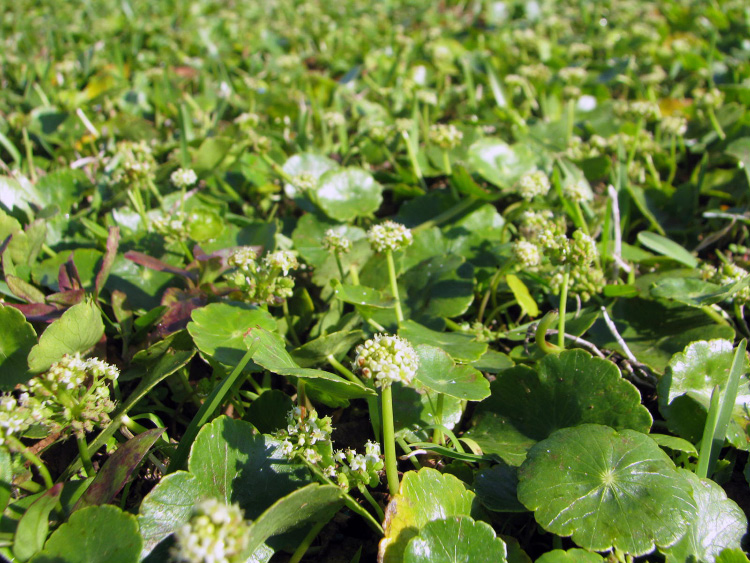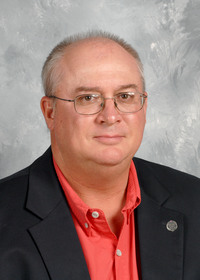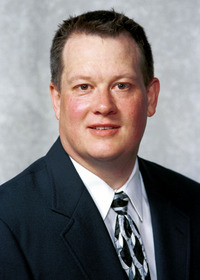Dollarweed Control in Mississippi Lawns and Ornamentals

Hydrocotyle, better known locally as dollarweed or pennywort, is a rhizomatous perennial with umbrella-like, long-stalked, scallop-margined, waxy leaves. The petiole (stem) is found in the center of the leaf. This characteristic helps define it from Dichondra, which has a C-shaped, smooth-edged leaf, with the petiole found at the edge of the C indentation. Hydrocotyle species in Mississippi include H. bonariensis, H. prolifera, H. ranunculoides, H. sibthorpiodes, H. umbellate, and H. verticillata. Dollarweed is most often associated with moist to wet sites.
Cultural Control
Whether in ornamental beds or turf, proper cultural management that favors desired plant material is the basis of all weed control programs. Previous research conducted in Florida indicates that reducing irrigation frequency may decrease dollarweed densities. Since dollarweed prefers wet conditions, practice proper irrigation (not too much, not too little, and infrequent rather than every day). Remember, warm-season turfgrasses only need roughly 1 to 1.5 inch of irrigation/precipitation a week during the summer growing months. An inch applied weekly ensures deep rooting and more drought-tolerant turf. Make sure that soil drainage is adequate. Renovation of areas in order to improve surface drainage may be required. Another suggestion is that ornamental beds be mulched to approximately 3 inches of thickness.
Homeowners should be aware that complete eradication of this weed is impractical. Although chemical options exist, they are limited, especially without proper licensing. For these reasons, periodic hand removal of dollarweed is often the most effective control measure.
Chemical Control in Ornamentals
Dollarweed is a perennial that spreads vegetatively by rhizomes (vine-like runners). Applying a preemergence herbicide (those herbicides that prevent germination of seedlings) is recommended for regular bed maintenance but may provide limited control of this particular weed. Gallery (isoxaben), a preemergence herbicide, is labeled for use around many ornamental species. Image (imazaquin), a postemergence herbicide (those herbicides that control existing stands of the weed after seedling emergence) lists dollarweed control with repeat applications, and it can be used around some ornamentals. Read the labels carefully for specific use applications. Glyphosate (Round-up, Eraser, Touchdown, and others) can be applied postemergence; however, do not allow it to contact ornamentals because this chemistry is nonselective (it kills plants indiscriminately). Also keep in mind that many commercial products contain glyphosate, a slow-acting herbicide, plus a fast-acting herbicide like diquat. Glyphosate alone may be more effective at killing plant roots, but it requires time to translocate throughout the plant.
Chemical Control in Turf
Atrazine, indaziflam (Specticle), and isoxaben (Gallery) are preemergence herbicides that provide some control of dollarweed in warm-season turfgrasses. Products containing atrazine (Hi-Yield Atrazine Weed Killer, Southern-Ag Atrazine St. Augustine Weed Killer, and many others) are available at home garden and farm supply stores; however, they should be used with caution since atrazine can travel through the soil and enter groundwater.
Postemergence herbicide options include metsulfuron-methyl (Manor, MSM-Turf, or Martin’s Top Shot), as well as auxin-mimicking herbicide mixtures 2,4-D, MCPP, and dicamba (Trimec), which are commonly marketed toward homeowners as selective postemergence broadleaf herbicides. Imazaquin (Image) may also provide fair control. Be aware: most broadleaf-specific herbicides will injure trees and shrubs. Read the labels carefully for use restrictions and suggestions.
Nonselective postemergence herbicides, such as glyphosate, can be used for control, but many turfgrass and ornamental species can be seriously injured or killed when these products are applied to green plant parts.
|
Herbicide application timing |
Common chemical name |
Turfgrass safety |
Trade name |
|---|---|---|---|
|
preemergence |
atrazine |
St. Augustinegrass, centipedegrass |
Hi-Yield Atrazine Weed Killer, Southern-Ag Atrazine St. Augustine Weed Killer, many others |
|
preemergence |
isoxaben |
bahiagrass, bermudagrass, centipedegrass, St. Augustinegrass, zoysiagrass |
Gallery |
| preemergence | products containing indaziflam and broadleaf control herbicides (e.g., dicamba, penoxsulam, indaziflam) | Varies by rate. | Specticle, Bayer 3 in 1 Weed & Feed for Southern Lawns |
|
postemergence |
imazaquin |
bermudagrass, centipedegrass, St. Augustinegrass, seashore paspalum, zoysiagrass |
Image |
|
postemergence |
prepackaged mixtures of 2,4-D, MCPP, and dicamba |
Varies with products, but most are labeled for warm-season grasses. |
Trimec, Speedzone, Weed B Gon, Weed Free Zone, and numerious others |
|
postemergence |
glyphosate |
None. |
Round-up, Eraser |
|
postemergence |
metsulfuron-methyl |
bermudagrass, fine fescue, St. Augustinegrass, tall fescue Centipedegrass is tolerant at low rates. Only use during active growth. Not recommended in combination with recent fertilizer treatments. |
Manor, MSM-Turf, Martin's Top Shot |
*Applicators must follow all label directions.
The information given here is for educational purposes only. References to commercial products, trade names, or suppliers are made with the understanding that no endorsement is implied and that no discrimination against other products or suppliers is intended.
Information Sheet 1985 (POD-07-23)
By Jay McCurdy, PhD, Associate Professor, Plant and Soil Sciences. Some ideas and materials drawn from an original handout by Wayne Wells, PhD, retired Extension Professor/Turfgrass Specialist.
The Mississippi State University Extension Service is working to ensure all web content is accessible to all users. If you need assistance accessing any of our content, please email the webteam or call 662-325-2262.





